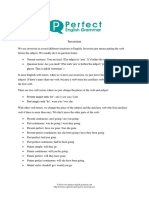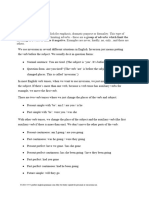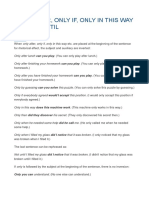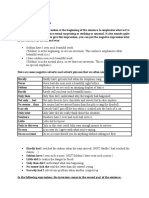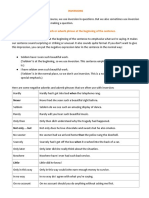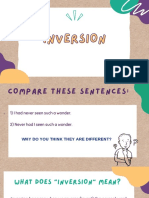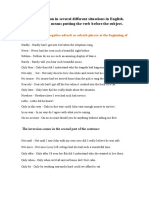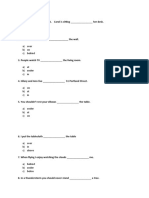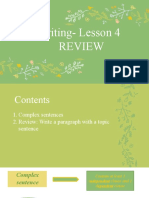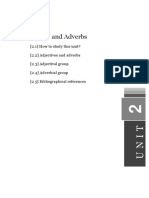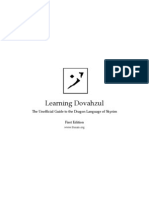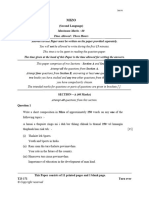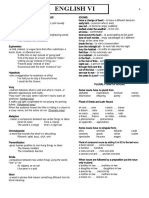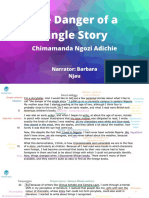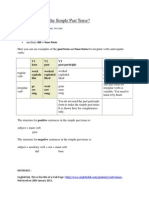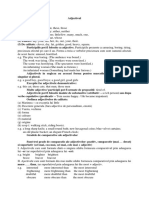0% found this document useful (0 votes)
81 views4 pagesLesson 5 Advanced Grammar Inversion
The document explains the concept of inversion in sentence structure, which involves reversing the usual word order to emphasize certain elements and create a formal tone. It outlines key uses of inversion, including after negative adverbials, in conditional sentences, with 'so' and 'such', and in questions and exclamations. The document also provides examples and practice exercises to help readers transform standard sentences into their inverted forms for emphasis.
Uploaded by
stephany de laraCopyright
© © All Rights Reserved
We take content rights seriously. If you suspect this is your content, claim it here.
Available Formats
Download as PDF, TXT or read online on Scribd
0% found this document useful (0 votes)
81 views4 pagesLesson 5 Advanced Grammar Inversion
The document explains the concept of inversion in sentence structure, which involves reversing the usual word order to emphasize certain elements and create a formal tone. It outlines key uses of inversion, including after negative adverbials, in conditional sentences, with 'so' and 'such', and in questions and exclamations. The document also provides examples and practice exercises to help readers transform standard sentences into their inverted forms for emphasis.
Uploaded by
stephany de laraCopyright
© © All Rights Reserved
We take content rights seriously. If you suspect this is your content, claim it here.
Available Formats
Download as PDF, TXT or read online on Scribd
/ 4


